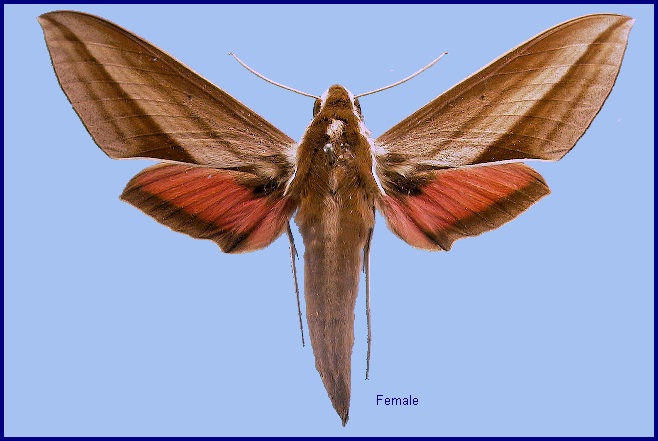
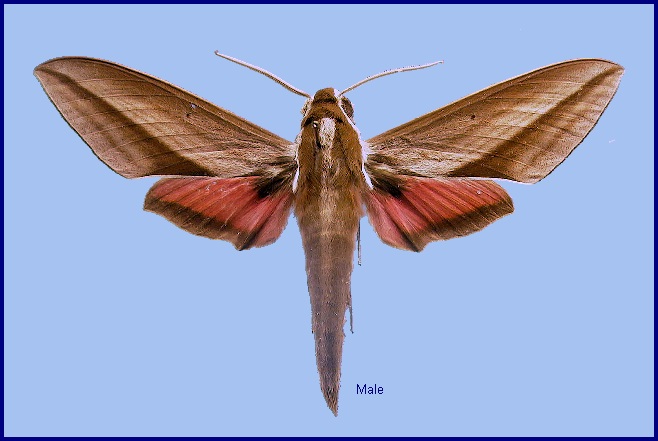
Chaerocampa [sic] suffusa Walker, 1856, List Specimens lepid. Insects Colln Br. Mus. 8: 146. Type locality: [China,] Hong Kong.
Synonym. Chaerocampa suffusa Walker, 1856.
Synonym. Choerocampa hector Boisduval, 1875.
[Further details on this species in Japan, as well as photos of many stages, can be found on Digital Moths of Japan.]
Wingspan: 80--102mm. Similar to Theretra alecto but immediately recognizable by the broad pale dorsal stripe running along the thorax and abdomen, and the black basal patch of the hindwing upperside not extending towards the tornus. Forewing upperside similar to Theretra alecto but contrast between the paler basal and median area and the darker postmedian area stronger.
Male genitalia similar to Theretra alecto, but uncus somewhat broader, more obtuse, less curved. Harpe less slender, somewhat spatulate and twisted.
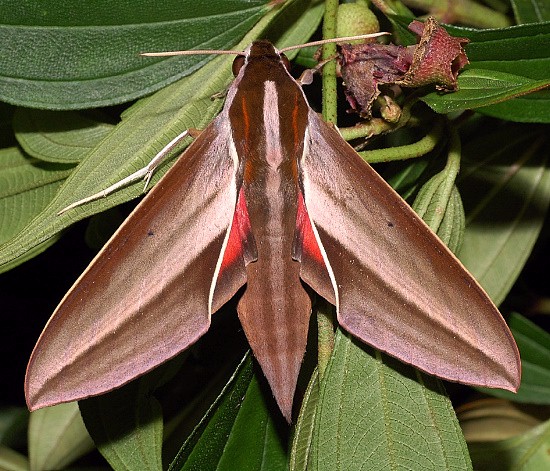
Flies just after dusk.
China: iv-x (Hong Kong); v-vii (Guangdong); vi (Hainan). Taiwan: iv (Tainan Hsien); vii (Nantou Hsien). Japan: 9.x (Ryukyu Archipelago).
OVUM: Grass-green, broadly ovoid (2 x 1.4 x 1.4mm), surface smooth and shiny (Bell & Scott, 1937).
LARVA: Full-fed 88mm, width 12mm, horn 11mm. Dichromatic, with green and brownish grey forms, the green being the most common.
According to Bell & Scott (1937), in the final instar shape as in others of the genus; horn long, slightly down-curved. Surface dull and smooth. In the green form, body colour green; eye-spots on segments 5 to 11, rounded dorsad, flattened ventrad, that on 5 green or blue above, yellow below, the green or blue portion edged narrowly with yellow. The eye-spot on 6 to 11 similar, but the green or blue upper half replaced by pale greyish-brown. Horn sky-blue to reddish; true legs reddish.
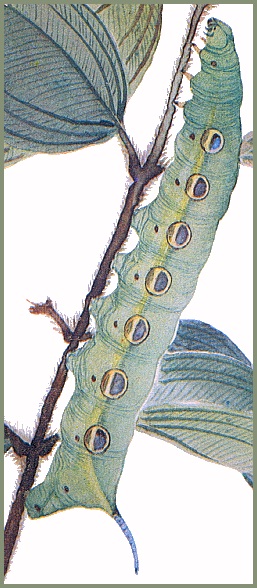
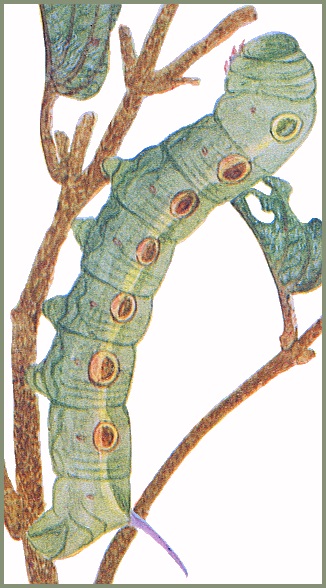
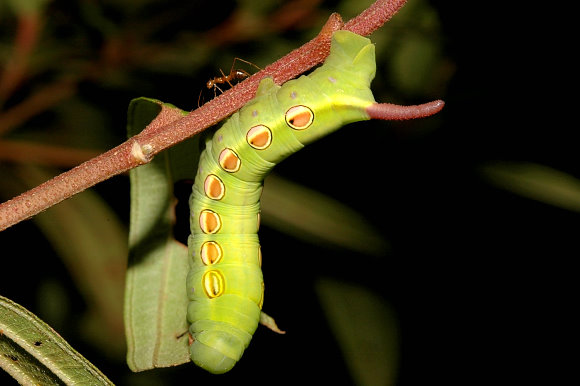
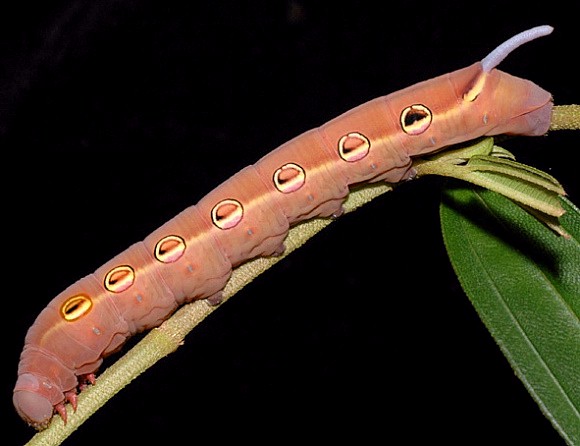

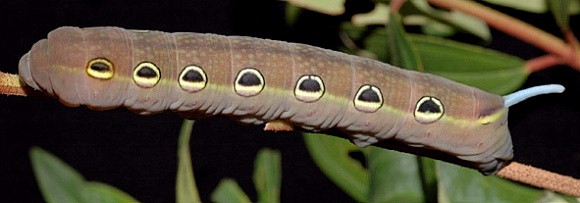
PUPA: 63--68mm, width 12-14 mm.; tongue-sheath projecting 6 mm frontad of head. Similar in shape to that of T. alecto. Colour pale reddish-brown; head, tongue-case and wing-case dotted and mottled with brown; abdomen with a dark dorsal stripe and a subdorsal row of dark dots; venter bone-colour dotted and shaded with brown. Tongue-case in side-view shaped like a duck's bill seen from above. Antenna slightly longer than fore leg, which reaches to about one-third the wing-case, mid-leg to about middle; there is a small coxal piece. Surface dull and smooth except for sides of tongue-case, which are rugose. Cremaster dorsally convex, centrally concave; a truncate prolongation of the dorsal surface of segment 14, ending in a short spine at each dorso-lateral angle of the truncation (Bell & Scott, 1937).


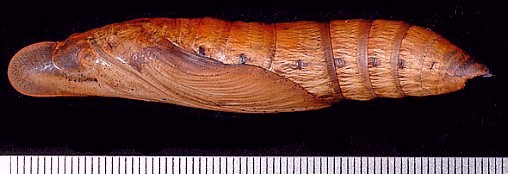
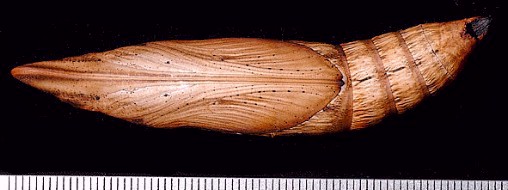
Larval hostplants. On Melastoma sanguineum (Melastomataceae) in India (Bell & Scott, 1937) and Melastoma septemnervium on Taiwan.
China: Guangdong (Guangzhou; Dinghushan; Luofu Shan; Wanzishan, Deqing; Fengwan); Hong Kong; Hainan (Longhushan, Wenchang City).
Taiwan: Tainan Hsien (Kuantzuling, 1000'); Nantou Hsien (Puli; Wushe); Hualien Hsien (Hungyeh).
Japan: Ryukyu Archipelago (Iriomote-jima).
Nepal, northeastern India (Subhasish Arandhara, 2016), Thailand, southern China, Taiwan, southern Japan (Ryukyu Archipelago), Laos, Cambodia, Vietnam (Le & Vu, 2024), the Andaman Islands, Malaysia (Peninsular, Sarawak, Sabah), Singapore, Indonesia (Sumatra, Java, Kalimantan, Sulawesi), and Palawan.
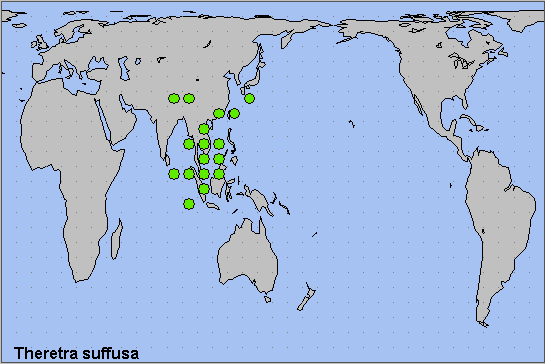
 Return to Sphingidae of the Eastern Palaearctic species list
Return to Sphingidae of the Eastern Palaearctic species list